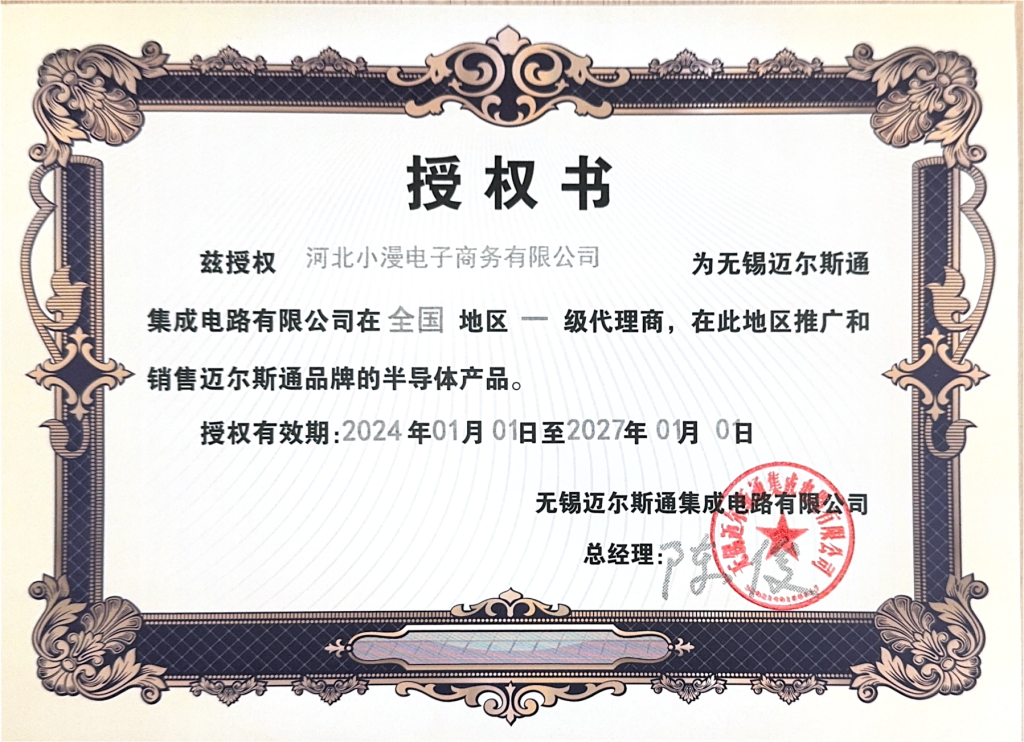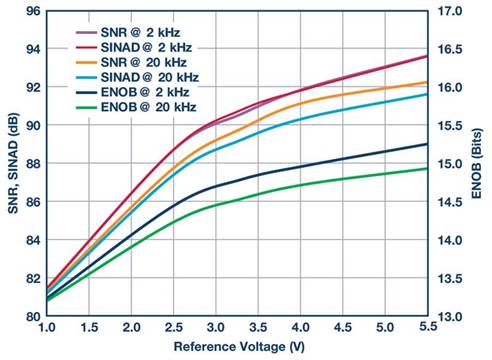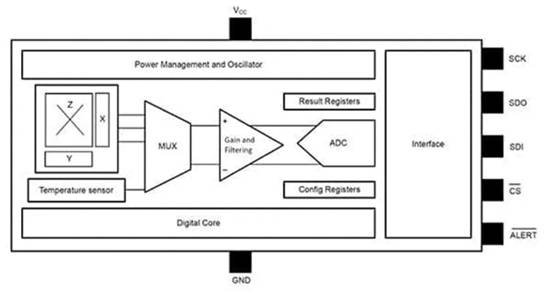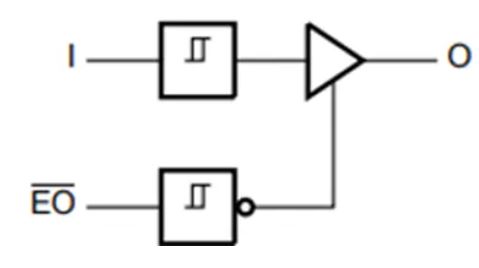在CVAVR体系供给的规范库函数stdio.h中,供给了getchar()函数,该函数是选用轮询方法从USART接纳数据的,轮询方法不只功率低,并且会丢掉数据,不能实现多任务的并行处理。
CVAVR程序导游中给出的选用中止+缓冲的方法承受数据,同PC的串口承受数据的方法相同,充分利用了AVR的高速和RAM多的长处,表现出了怎么才干充分发挥AVR的特色的程序设计思维,这种思路在32位体系中也是这样的。
运用AVR的话,对软件的设计能力要求更高了,不然底子不能发挥和表现AVR的特色。许多人有了一点C的根底,就以为选用C编写单片机程序没问题,很快就会把握AVR了,对此我只能一笑了之。看看本站上很多的代码,再看看本贴的遭受,能说什么呢?
回到本题:
注1:
假如在程序的最初部分加上句子
#define_DEBUG_TERMINAL_IO_
那么程序在编译时仍运用体系自己的getchar()函数,这样在软件模仿仿真时,能够从模仿的终端读取数据,便于在软件模仿环境中调试整个体系,而需求正式运转时,则把该句注释掉。
注2:
此处在正式运用中应根据实际状况做恰当的修正。不然当主程序调用getchar()时,假如缓冲行列中没有数据,一起对方也没有发数据的状况时,程序会在此死循环。
比较简单的方法是将这句删掉,而在调用getchar()函数前先判别rx_counter的值,为0的话就不调用了。
或改为:
signedintgetchar(void)
{
signedintdata;
if(rx_counter==0)
{
data=-1;
}
else
{
data=rx_buffer[rx_rd_index];//读取缓冲行列中的数据
if(++rx_rd_index==RX_BUFFER_SIZE)rx_rd_index=0;//读取指针指向下一个未读的数据,假如指到了行列尾部,则指回到行列头步
#asm(“cli”)//关中止!十分重要
–rx_counter;//行列中未读数据个数减1。由于该变量在接纳中止中要改动的,为了避免抵触,所以改动前暂时封闭中止。程序适当可靠了。
#asm(“sei”)//开中止
}
returndata;
}
注3:
有爱好期望深化真实学习的网友,可将CVAVR生成的USART发送代码仔细剖析以下。它的发送代码十分完美,能够立刻运用。
#include
#defineRXB81
#defineTXB80
#defineUPE2
#defineOVR3
#defineFE4
#defineUDRE5
#defineRXC7
#defineFRAMING_ERROR(1<
#definePARITY_ERROR(1<
#defineDATA_OVERRUN(1<
#defineDATA_REGISTER_EMPTY(1<
#defineRX_COMPLETE(1<
//USARTTransmitterbuffer
#defineTX_BUFFER_SIZE8
chartx_buffer[TX_BUFFER_SIZE];
#ifTX_BUFFER_SIZE<256
unsignedchartx_wr_index,tx_rd_index,tx_counter;
#else
unsignedinttx_wr_index,tx_rd_index,tx_counter;
#endif
//USARTTransmitterinterruptserviceroutine
interrupt[USART_TXC]voidusart_tx_isr(void)
{
if(tx_counter)
{
–tx_counter;
UDR=tx_buffer[tx_rd_index];
if(++tx_rd_index==TX_BUFFER_SIZE)tx_rd_index=0;
};
}
#ifndef_DEBUG_TERMINAL_IO_
//WriteacharactertotheUSARTTransmitterbuffer
#define_ALTERNATE_PUTCHAR_
#pragmaused+
voidputchar(charc)
{
while(tx_counter==TX_BUFFER_SIZE);
#asm(“cli”)
if(tx_counter||((UCSRA&DATA_REGISTER_EMPTY)==0))
{
tx_buffer[tx_wr_index]=c;
if(++tx_wr_index==TX_BUFFER_SIZE)tx_wr_index=0;
++tx_counter;
}
else
UDR=c;
#asm(“sei”)
}
#pragmaused-
#endif
//StandardInput/Outputfunctions
#include
//Declareyourglobalvariableshere
voidmain(void)
{
//Declareyourlocalvariableshere
//Input/OutputPortsinitialization
//PortAinitialization
//Func7=InFunc6=InFunc5=InFunc4=InFunc3=InFunc2=InFunc1=InFunc0=In
//State7=TState6=TState5=TState4=TState3=TState2=TState1=TState0=T
PORTA=0x00;
DDRA=0x00;
//PortBinitialization
//Func7=InFunc6=InFunc5=InFunc4=InFunc3=InFunc2=InFunc1=InFunc0=In
//State7=TState6=TState5=TState4=TState3=TState2=TState1=TState0=T
PORTB=0x00;
DDRB=0x00;
//PortCinitialization
//Func7=InFunc6=InFunc5=InFunc4=InFunc3=InFunc2=InFunc1=InFunc0=In
//State7=TState6=TState5=TState4=TState3=TState2=TState1=TState0=T
PORTC=0x00;
DDRC=0x00;
//PortDinitialization
//Func7=InFunc6=InFunc5=InFunc4=InFunc3=InFunc2=InFunc1=InFunc0=In
//State7=TState6=TState5=TState4=TState3=TState2=TState1=TState0=T
PORTD=0x00;
DDRD=0x00;
//Timer/Counter0initialization
//Clocksource:SystemClock
//Clockvalue:Timer0Stopped
//Mode:Normaltop=FFh
//OC0output:Disconnected
TCCR0=0x00;
TCNT0=0x00;
OCR0=0x00;
//Timer/Counter1initialization
//Clocksource:SystemClock
//Clockvalue:Timer1Stopped
//Mode:Normaltop=FFFFh
//OC1Aoutput:Discon.
//OC1Boutput:Discon.
//NoiseCanceler:Off
//InputCaptureonFallingEdge
//Timer1OverflowInterrupt:Off
//InputCaptureInterrupt:Off
//CompareAMatchInterrupt:Off
//CompareBMatchInterrupt:Off
TCCR1A=0x00;
TCCR1B=0x00;
TCNT1H=0x00;
TCNT1L=0x00;
ICR1H=0x00;
ICR1L=0x00;
OCR1AH=0x00;
OCR1AL=0x00;
OCR1BH=0x00;
OCR1BL=0x00;
//Timer/Counter2initialization
//Clocksource:SystemClock
//Clockvalue:Timer2Stopped
//Mode:Normaltop=FFh
//OC2output:Disconnected
ASSR=0x00;
TCCR2=0x00;
TCNT2=0x00;
OCR2=0x00;
//ExternalInterrupt(s)initialization
//INT0:Off
//INT1:Off
//INT2:Off
MCUCR=0x00;
MCUCSR=0x00;
//Timer(s)/Counter(s)Interrupt(s)initialization
TIMSK=0x00;
//USARTinitialization
//CommunicationParameters:8Data,1Stop,NoParity
//USARTReceiver:Off
//USARTTransmitter:On
//USARTMode:Asynchronous
//USARTBaudrate:9600
UCSRA=0x00;
UCSRB=0x48;
UCSRC=0x86;
UBRRH=0x00;
UBRRL=0x19;
//AnalogComparatorinitialization
//AnalogComparator:Off
//AnalogComparatorInputCapturebyTimer/Counter1:Off
ACSR=0x80;
SFIOR=0x00;
//Globalenableinterrupts
#asm(“sei”)
while(1)
{
//Placeyourcodehere
putchar(0x55);
};
}
考虑剖析:
我在主程序的循环里仅有一句不断的发0X55,问题是AVR的运转速度十分快,而USART串出的速度必定显着的慢(按9600bps核算,需求1秒多时刻才干送出1000个字符),那么,假定主程序循环了1000次,发送1000个0x55,请判别在UASRT口上能否正确的宣布1000个0x55,有没有丢掉或溢出现象存在?
声明:本文内容来自网络转载或用户投稿,文章版权归原作者和原出处所有。文中观点,不代表本站立场。若有侵权请联系本站删除(kf@86ic.com)https://www.86ic.net/ziliao/zhudong/256395.html









